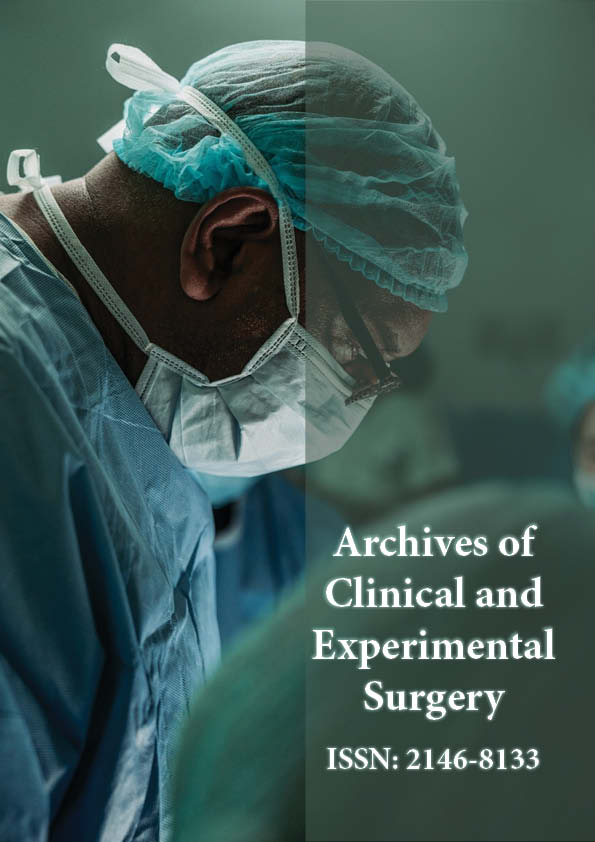Perspective - Archives of Clinical and Experimental Surgery (2022)
Principles and Benefits of Bloodless Surgery
Dola Sia*Dola Sia, Department of Surgery, Taraba State University, Taraba, Nigeria, Email: Sdola6@hotmail.com
Received: 04-Apr-2022, Manuscript No. EJMACES-22-62704; Editor assigned: 08-Apr-2022, Pre QC No. EJMACES-22-62704 (PQ); Reviewed: 18-Apr-2022, QC No. EJMACES-22-62704; Revised: 25-Apr-2022, Manuscript No. EJMACES-22-62704 (R); Published: 05-May-2022
Description
Bloodless surgery
Adolf Lorenz, known as “the bloodless surgeon of Vienna,” invented a non-invasive surgical approach known as “bloodless surgery.” His medical profession sprang from a severe allergy to carbolic acid, which was often utilised in operating rooms at the time. He was obliged to become a “dry surgeon” due to his ailment. The phrase is now used to describe both invasive and non-invasive medical procedures and practises. The term does not refer to surgery that does not involve the use of blood or blood transfusions. Rather, it refers to procedure that does not require the use of allogeneic blood. Bloodless surgery proponents, on the other hand, transfuse goods derived from allogeneic blood (blood from other persons), as well as pre-donated blood for autologous transfusion (blood pre-donated by the patient postoperatively, surgeons seek to minimize further blood loss by continuing administration of medications to augment blood cell mass and minimizing the number of blood draws and the quantity of blood drawn for testing, for example, by using paediatric blood tubes for adult patients.
Principles
In surgery, control of bleeding is achieved with the use of laser or sonic scalpels, minimally invasive surgical techniques, electrosurgery and electrocautery, low central venous pressure anaesthesia (for select cases), or suture ligation of vessels. The use of laser or sonic scalpels, minimally invasive surgical procedures, electro surgery and electrocautery, low central venous pressure anaesthesia (for certain situations), or suture closure of veins are all used in surgery to prevent bleeding.
Other options include the use of blood substitutes, which do not contain oxygen but instead enlarge the blood volume to prevent shock. PolyHeme, for example, is a blood replacement that does carry oxygen. Blood substitutes which do carry oxygen, such as PolyHeme, are also under development. Many surgeons consider acute normovolemic hemodilution, which is a method of storing a patient’s own blood, to be a cornerstone of “bloodless surgery,” however it is not an option for patients who refuse autologous blood transfusions.
Intraoperative blood salvage is a technique for recycling and cleaning a patient’s blood during surgery and returning it to the patient’s body. Surgeons try to prevent further blood loss after surgery by continuing to administer drugs to increase blood cell mass and reducing the number of blood draws and the amount of blood obtained for testing, such as by using paediatric blood tubes for adult patients. HBOCs like Polyheme and Hemepure have been phased out due to serious side effects, including death. South Africa was the only country where they were legally authorized as standard treatment but they are no longer available.
Benefits
Many doctors choose bloodless medicine because it has a lower risk of infection after surgery than procedures that require blood transfusion. In some nations, it may also be economically beneficial. Blood, for example, costs roughly $ 500 per unit in the United States, including testing. According to Jan Hoffman (an administrator for the blood conservation programme at Geisinger Medical Center in Danville, Pennsylvania), hospitals are required to cover the costs of the first three units of blood given per patient per calendar year. Hospitals, on the other hand, may be reimbursed for medications that increase a patient’s red blood cell count, which is commonly used before and after surgery to lessen the need for a blood transfusion. However, such payouts are mainly dependent on insurance company discussions. In 2005, Geisinger Medical Center launched a blood conservation programme, which saved $ 273,000 in the first six months of operation. The Cleveland Clinic cut their direct costs from $ 35.5 million in 2009 to $ 26.4 million in 2012, saving roughly $ 10 million in three years.
Another aspect in their attraction appears to be health risks, especially in light of recent studies suggesting that blood transfusions can raise the risk of complications and lower survival rates. As a result, bloodless surgery has a faster recovery rate, allowing the patient to depart sooner.
Copyright: © 2022 The Authors. This is an open access article under the terms of the Creative Commons Attribution NonCommercial ShareAlike 4.0 (https://creativecommons.org/licenses/by-nc-sa/4.0/). This is an open access article distributed under the terms of the Creative Commons Attribution License, which permits unrestricted use, distribution, and reproduction in any medium, provided the original work is properly cited.







